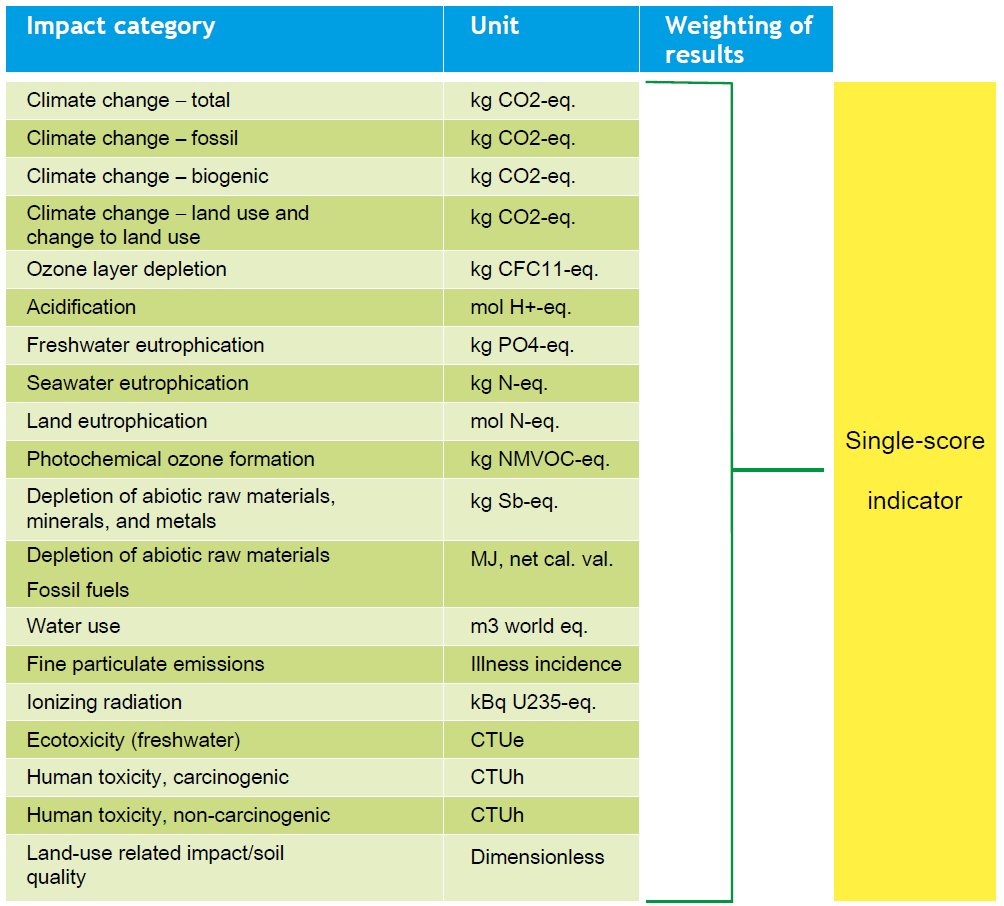Environmental performance calculation
Environmental performance of construction works is an important measure of a structure's sustainability. The better the environmental performance of the construction work, the lower the environmental impact is.
Calculating environmental performance is mandatory in the C & U sector according to the Building Decree. In the Civil Engineering sector, we see more and more clients including environmental performance as an award criterion in tenders.
Is this subject new to you? Then first read Environmental performance in brief.

Environmental performance calculation
The environmental performance calculation is conducted according to the Environmental Performance Assessment Method for Construction Works. The Assessment Method applies to calculating the environmental performance of both buildings and civil engineering structures.
The environmental performance calculation is performed according to the Assessment Methodology Environmental Performance of Building Works. The Assessment Methodology applies to the calculation of the environmental performance of both a building and a civil engineering structure.
The Assessment Method does not focus on the environmental performance of individual products but on the environmental performance of the building or civil engineering structure as a whole. The building or structure is the unit for which the performance is measured and in which the product is used to enable the building to fulfil its function. The design and the intended service life are therefore determining for the installed construction products and the building installations and the number of replacements of these during the building’s service life.
A summary of the environmental performance assessment
According to EN15804, the Assessment Method gives practical instructions for analysing environmental performance. The Assessment Method is based on the environment oriented Life Cycle Assessment, or LCA. An LCA considers all phases in a product’s life cycle. This particularly relates to the function a product must fulfil in a building. An LCA assesses a product’s life cycle phases, including production, construction and disposal. Read more about this on the environmental data page. A Life Cycle Assessment (LCA) results in an environmental profile. Until end 2020, this profile comprised 11 environmental impact categories in accordance with EN 15804, but as EN15804 was amended in 2019 and its methodology was synchronised with the LCA methodology from the PEF (Product Environmental Footprint), from 1 January 2021 and in line with EN15804+A2, the profile comprises 19 environmental impact categories (NL) . (See image below)
A single point score – the environmental performance – is determined based on a weighting of the various environmental impact categories. For civil engineering, this is the Environmental Cost Indicator (ECI) score expressed in Euro and for Civil and Utility Construction (C&U) this is the Environmental Performance of Buildings (Environmental Performance of Buildings) score expressed in Euro/m2/year. Expressing the environmental performance in a single point score enables comparison with other buildings’ environmental performance as well as improved communication of the environmental impact and the requirements that are set. The environmental performance of a structure can be assessed using calculation tools that are validated in advance by Stichting National Environmental Database. See Calculation tools.

Interpretations and design issues in calculating the environmental performance of buildings
The Environmental Performance Calculation Guide, July 2020 version contains several interpretations and design issues for calculating the energy performance of buildings. The guide largely follows the context of the threshold for environmental performance as stated in the Building Decree, which came into force on 1 January 2018.
Influence of a building design on environmental performance
The guide contains, for example, the influences of a building design on the environmental performance calculation, based on research by W/E Advisors (Utrecht). The research revealed the influence of, for example, extra high floors, bay windows and extra facade area on environmental performance. Download the report here
Including external facilities in the MPG calculation
The system delimitation for environmental performance extends to the plot boundary: installations for external energy supply, but also external sewerage are included in the environmental performance in the Building Code. By way of illustration, reference is made to the Building Decree Infosheet 2012 on sewerage and municipal water duties. The illustrations in the Infosheet show to what extent the facilities within the plot boundary extend and must therefore be included in the environmental performance calculation of the building.
Inclusion of installations for external energy supply in the EPB calculation
Installations for external energy supply (e.g. the connections for gas, electricity and/or heat, but also the energy infrastructure and central installations for generation/conversion) must be included in the environmental performance calculation. Relevant installations will have to be named in the energy performance calculation and an equivalent in terms of material use will have to be included in the environmental performance calculation. The Dutch Environmental Database includes so-called default values for this, which are determined by entering the (calculated) building-related energy use in the calculation.
Environmental impact of energy use and material use considered in context
Until now, the focus in sustainable construction has been mainly on energy savings in heating, cooling, etc. In most cases, the energy-saving measures require the use of more materials and installations. The influence of this material use on the total environmental burden (environmental impact of energy and material use) of a building dampens the environmental gain of the energy-saving measures. It makes sense to minimise this by bringing environmental impacts of energy and material use under an equal heading and optimising measures in this connection.
Reference buildings for environmental performance monitoring and impact studies
W/E consultants, in collaboration with LBP Sight, conducted the study 'Materialisation reference buildings' for the Dutch Environmental Database, in which fully materialised reference buildings are recorded. This set of reference buildings has been developed to enable relevant effect and monitoring studies to be carried out aimed at possible changes in the EPB. This set is publicly available so that calculations can be verified and reproduced.
Multiple use
The Assessment Methodology makes it possible to calculate the environmental performance of buildings in an unambiguous, verifiable and reproducible manner. From various organisations, the Assessment Methodology, including the NMD, is designated as a method to calculate the environmental performance of construction works.
- Among others in:
- Buildings Decree 2012
- Sustainable procurement of new office buildings
- Sustainable procurement of GWW works
- MIA/VAMIL (fiscal financing schemes)
- Certification of sustainable property according to
- BREEAM-NL
- GPR Building
The requirement environmental performance of buildings or EPB (MPG in Dutch) in building regulations, sustainable procurement and certification according to BREEAM and GPR is a good ensemble to promote circular construction. With the Assessment Methodology Environmental Performance of Buildings, the environmental effects of buildings can be calculated and made visible.
Frequently askes questions Environmental performance calculation
The Environmental Performance of Buildings (EPB - MPG in Dutch) calculates the environmental impact of the materials used in a building. The 2012 Building Decree makes this calculation mandatory for B&U:
- new residential buildings
- residential buildings
- offices with a surface area of 100 m2 or more
Each environmental performance calculation must comply with the 'Bepalingsmethode Milieuprestatie gebouwen en GWW-werken'. This allows the environmental performance of an entire building to be determined based on the performance of the products and elements that make up the building.
It enables clients and architects to make sustainable choices based on a national calculation method and database.
The determination of the environmental performance of a structure can be performed with calculation tools that have been validated by the Stichtng NMD.
The EPB is used to calculate the environmental performance of structures. The environmental performance is an important measure of the sustainability of a structure.
Calculating environmental performance is mandatory in the building and civil engineering sector under the Building Decree. In the civil engineering sector, we see more and more clients including environmental performance as an award criterion in tenders.
Download
Subscribe to our Newsletter
Sign up for our newsletter and receive monthly updates on sustainable construction, environmental performance, environmental data, policy, and other relevant news from the Dutch Environmental Database Foundation.

